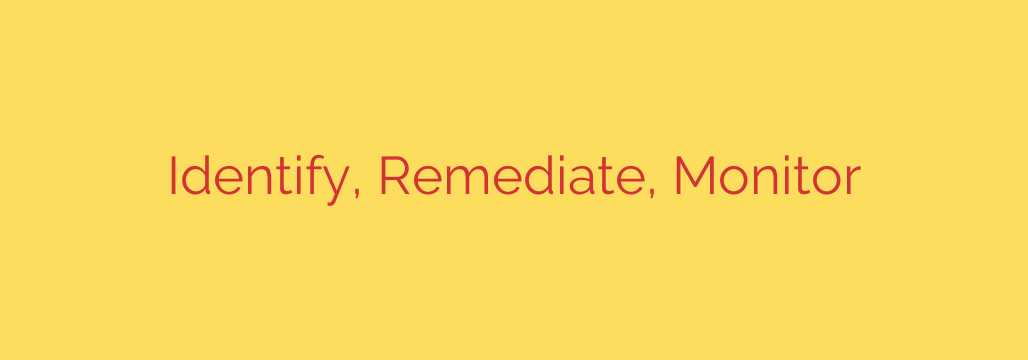
In today’s rapidly evolving digital landscape, maintaining a strong security posture is not a one-time task but an ongoing commitment. A fundamental framework that underpins effective cybersecurity and risk management revolves around a continuous cycle: Identify, Remediate, and Monitor. This proactive approach allows organizations to stay ahead of threats and protect their valuable digital assets.
The first critical step is Identifying potential risks, vulnerabilities, and threats within your systems, applications, and infrastructure. This involves actively scanning for weaknesses, conducting security assessments, and staying informed about the latest threat intelligence. You cannot protect what you don’t know is vulnerable. Effective identification requires visibility across your entire digital footprint, utilizing tools and processes to uncover potential entry points for attackers or areas of non-compliance.
Once vulnerabilities are identified, the next crucial phase is Remediation. This involves taking decisive action to fix or mitigate the identified problems. Not all issues are equal; prioritization is key, often based on severity, potential impact on business operations, and the likelihood of exploitation. Patching software, updating configurations, implementing stricter access controls, or deploying necessary security patches are common remediation actions. A robust remediation process includes tracking progress, assigning responsibilities, and verifying that the fixes were successful and didn’t introduce new issues.
Security isn’t static, making the third step, Monitoring, indispensable. This involves continuous oversight to detect new threats, spot emerging vulnerabilities that weren’t previously known or have appeared due to changes, and ensure that past remediation efforts remain effective over time. Implementing automated monitoring tools, reviewing system logs, setting up real-time alerts for suspicious activity, and regularly reassessing your security posture are vital components of this phase. Continuous monitoring provides the necessary intelligence to quickly identify new issues and restart the cycle, ensuring ongoing protection.
The Identify, Remediate, Monitor framework is the backbone of a resilient security strategy. By consistently applying these three principles in a cyclical manner, organizations can significantly reduce their attack surface, respond faster to incidents, and build a more secure and trustworthy digital environment. It’s a never-ending journey, but one that is essential for navigating the complexities of the modern threat landscape.
Source: https://blog.talosintelligence.com/patch-track-repeat/








